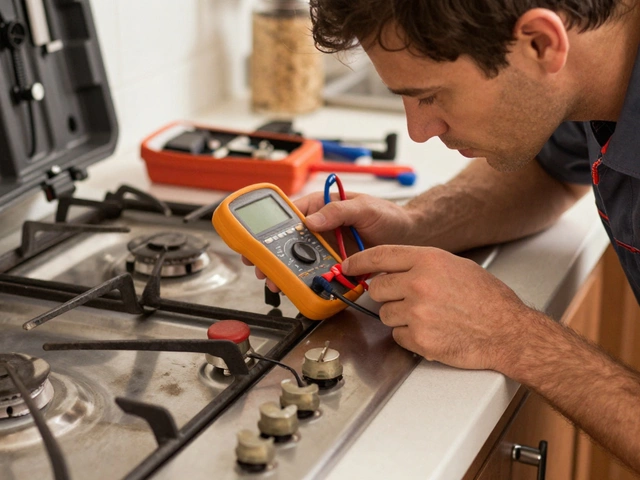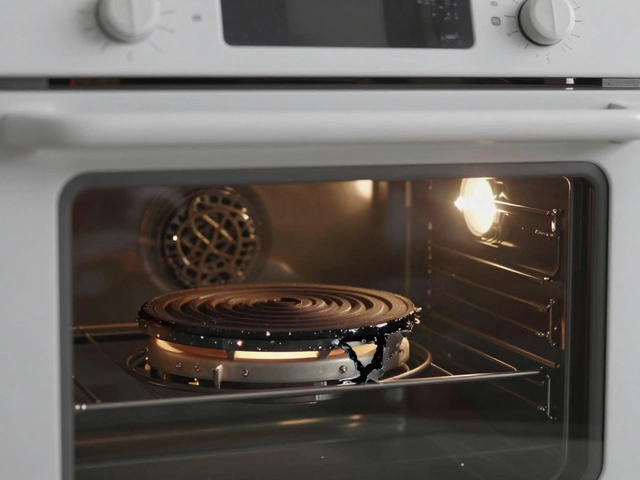Kitchen Fan Repair: Fix Your Exhaust Fast
When dealing with Kitchen Fan Repair, the process of diagnosing and fixing a malfunctioning kitchen extractor fan. Also known as kitchen exhaust repair, it keeps your cooking area safe and odor‑free.
One major player in this space is the Extractor Fan, a device that pulls steam, smoke and grease out of the kitchen. The fan’s performance directly influences Ventilation, the flow of fresh air that replaces the air removed by the fan. Good ventilation reduces moisture buildup, lowers fire risk, and improves indoor air quality. If the fan stops working, the ventilation system suffers, and you may notice lingering smells or excess steam.
Most kitchen fan issues need a qualified Electrician, a tradesperson trained to handle electrical components safely. An electrician can test motor continuity, replace wiring, or install a new fan safely. However, many homeowners can handle basic tasks—cleaning the filter, checking the switch, or tightening loose screws—without professional help. Knowing where to draw the line saves time and money.
Typical Problems and How to Spot Them
First, listen for strange noises. A humming motor that clicks usually means a broken bearing or a seized motor. Next, look for reduced airflow. If the fan feels weak, the filter might be clogged with grease. Finally, check for electrical signs—flickering lights or a tripping circuit breaker often point to wiring issues.
Cleaning the filter is the quickest win. Remove the grille, pull out the mesh, soak it in hot soapy water, and rinse thoroughly. Let it dry before reinstalling. A clean filter restores airflow and reduces motor strain, which can prolong the fan’s lifespan.
If cleaning doesn’t help, test the fan motor with a multimeter. Set the meter to resistance (Ω) and measure between the motor terminals; a reading of infinite resistance means the motor is dead. Replace the motor or the entire fan unit if the motor fails the test.
When the motor is fine but the fan still won’t spin, the capacitor may be at fault. The capacitor supplies the extra boost needed to start the motor. Swap it with a known good unit of the same rating, and you’ll see the fan start up instantly if the capacitor was the issue.
Electrical problems require more caution. If you notice a burnt smell or the fan’s switch feels warm, turn off the circuit at the breaker before inspecting. Loose connections or corroded terminals can cause intermittent operation or complete failure. Tighten or replace any suspect wiring, but if you’re unsure, call an electrician.
Some modern fans offer built‑in speed controls or smart features. Firmware glitches can freeze the fan. Resetting the fan by turning the power off for a few minutes often clears the error. If the problem persists, a software update from the manufacturer may be needed.
When it’s time to replace a fan, choose the right size. The fan’s CFM (cubic feet per minute) rating should match your cooktop’s dimensions. A rule of thumb: 100 CFM for every 12 inches of hob width. Matching the fan size ensures effective ventilation without excessive noise.
Installation is straightforward if you follow the manufacturer’s guide. Mount the fan securely, connect the wiring to a dedicated circuit, and seal any gaps with silicone to prevent drafts. Test the fan before closing the wall cavity.
Regular maintenance is the secret to avoiding costly repairs. Clean the filter monthly, inspect wiring annually, and listen for early signs of motor wear. A quick visual check every few months can catch issues before they become emergencies.
Below you’ll find a curated collection of articles that dive deeper into each of these topics—from DIY troubleshooting steps to when you really need a professional. Whether you’re a DIY enthusiast or just looking for a quick fix, the posts ahead will give you the knowledge to keep your kitchen air fresh and your fan humming smoothly.
Extractor fans play a crucial role in maintaining good air quality in your home. Whether in the kitchen or bathroom, these fans help remove excess moisture and unwanted smells. When your extractor fan stops working, it can create a host of problems. This article provides a simple, step-by-step guide to diagnosing and repairing common issues with extractor fans.


